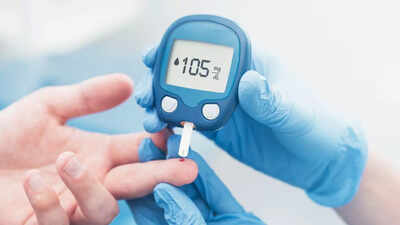For individuals managing diabetes, maintaining stable blood sugar levels is a continuous effort. A frequent challenge is the unexpected rise in blood glucose upon waking, often linked to the "Dawn Phenomenon." This refers to a natural increase in blood glucose levels during the early morning hours.

Image: Conceptual visualization of managing blood sugar levels.
Accurate monitoring of morning glucose is crucial for developing effective management strategies that include adjustments to medication, diet, and lifestyle. Recognizing your body's patterns allows for proactive measures to control elevated blood sugar levels, ultimately promoting better overall health.
Blood sugar, or blood glucose, represents the amount of glucose in the blood. Glucose is the body's primary energy source. The Dawn Phenomenon is a natural process where blood sugar levels increase in the early morning due to the release of hormones like cortisol and growth hormone.
This phenomenon is common among individuals with diabetes, affecting over 50% of those with Type 1 or Type 2 diabetes. Monitoring blood sugar levels, particularly in the morning, is essential to tailor management plans, including adjustments to medication, diet, and lifestyle habits.
According to the American Diabetes Association, the primary cause of high morning blood sugar is reduced insulin activity. Between 3 am and 8 am, the body releases hormones that stimulate the liver to produce more glucose, providing energy for waking up.
However, in individuals with diabetes:
Consequently, blood sugar levels rise, leading to elevated morning readings.
The main sign of the Dawn Phenomenon is high morning blood sugar levels, typically detected using glucometers or continuous glucose monitoring (CGM) devices.
Other common symptoms may include:
Continuous glucose monitoring (CGM) is the most effective method for detecting the Dawn Phenomenon, as it tracks glucose levels 24/7. CGM devices measure glucose levels every few minutes, providing a detailed graph of blood sugar patterns. Without CGM, healthcare providers can analyze consistent glucometer readings to identify the Dawn Phenomenon.
This comprehensive data helps:
Unmanaged Dawn Phenomenon can lead to consistently high blood sugar levels, increasing the risk of diabetes complications, such as:
Prolonged periods of high blood sugar can negatively impact long-term health outcomes.
Some lifestyle adjustments and home remedies may help lower morning blood sugar levels:
If high blood glucose levels occur frequently (more than three times in 2 weeks), consult a doctor. Always seek personalized medical advice before trying home remedies or changing medications.
The timing of blood sugar tests is crucial, as levels fluctuate after consuming carbohydrates. Recommended times include:
To manage blood sugar spikes related to the Dawn Phenomenon, consider the following strategies:
If elevated morning blood sugar levels persist, consult your healthcare provider for individualized advice. Consistency and regular follow-ups can significantly reduce the risk of complications associated with the Dawn Phenomenon.
Newer articles
Older articles
 Smith Eyes Grenada Test Return After Injury Recovery
Smith Eyes Grenada Test Return After Injury Recovery
 Google Maps Boosts Navigation Precision with Fused Orientation Provider Update
Google Maps Boosts Navigation Precision with Fused Orientation Provider Update
 Earth Sciences Minister Rijiju Expresses Frustration Over Atos Supercomputer Delay, Jeopardizing Weather Forecast Upgrades
Earth Sciences Minister Rijiju Expresses Frustration Over Atos Supercomputer Delay, Jeopardizing Weather Forecast Upgrades
 Washington Freedom Snatch Last-Ball Win Over Knight Riders in MLC Thriller; Playoff Hopes Soar
Washington Freedom Snatch Last-Ball Win Over Knight Riders in MLC Thriller; Playoff Hopes Soar
 East Africa Rift: Mantle Upwelling Drives Birth of New Ocean, Study Finds
East Africa Rift: Mantle Upwelling Drives Birth of New Ocean, Study Finds
 Colon Cancer: Don't Ignore These 5 Subtle Warning Signs
Colon Cancer: Don't Ignore These 5 Subtle Warning Signs
 Prasidh Krishna Vows to Sharpen Bowling After Costly Leeds Performance
Prasidh Krishna Vows to Sharpen Bowling After Costly Leeds Performance
 Gavaskar Urges India to Replace Thakur with Yadav for Second Test Against England
Gavaskar Urges India to Replace Thakur with Yadav for Second Test Against England
 Rishabh Pant's Unconventional Batting Style Is Revolutionizing Cricket, Says Greg Chappell
Rishabh Pant's Unconventional Batting Style Is Revolutionizing Cricket, Says Greg Chappell
 Vitamin B12 Deficiency: Cardiologist Explains Symptoms, Sources, and Why You're Always Tired
Vitamin B12 Deficiency: Cardiologist Explains Symptoms, Sources, and Why You're Always Tired